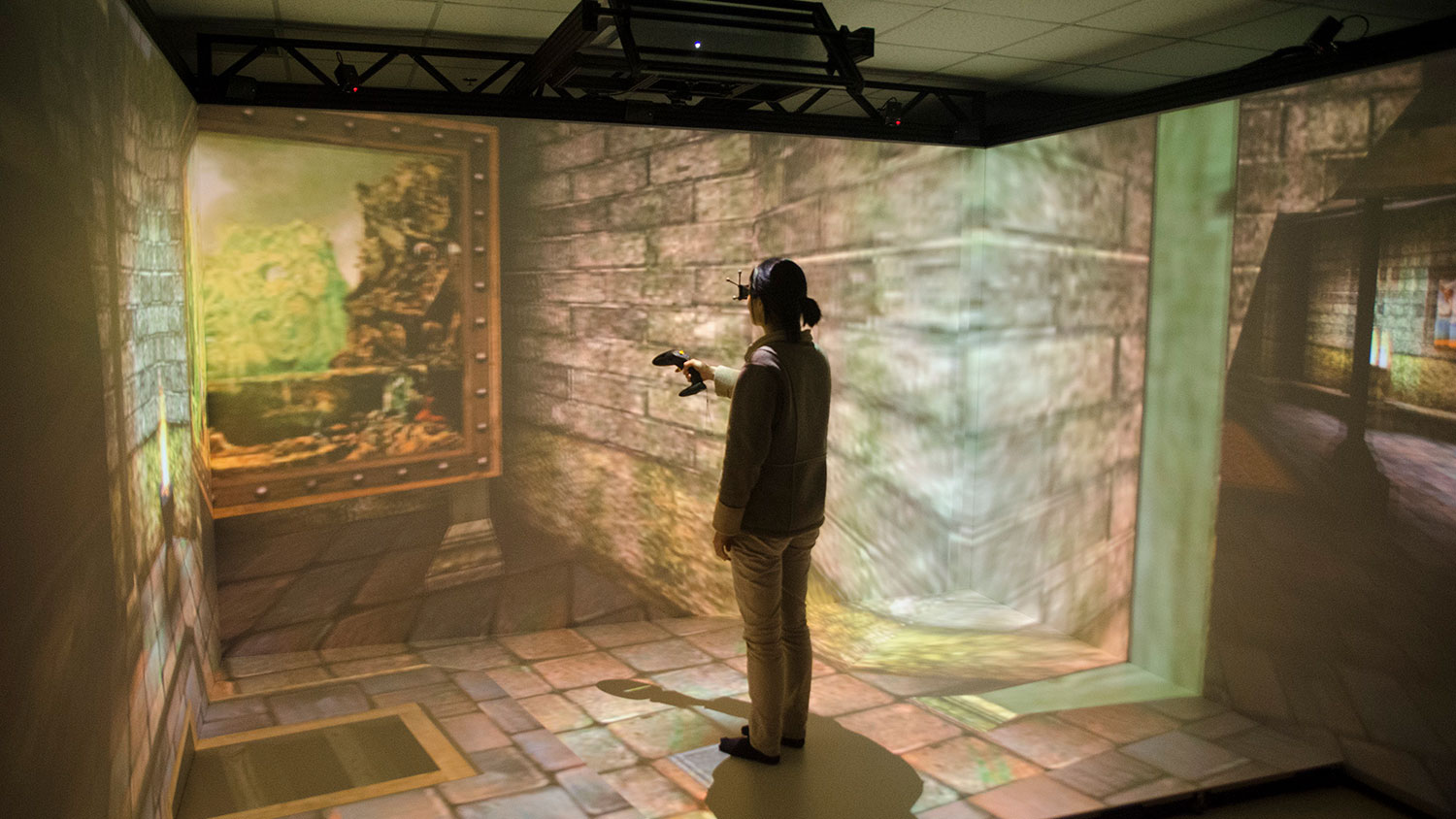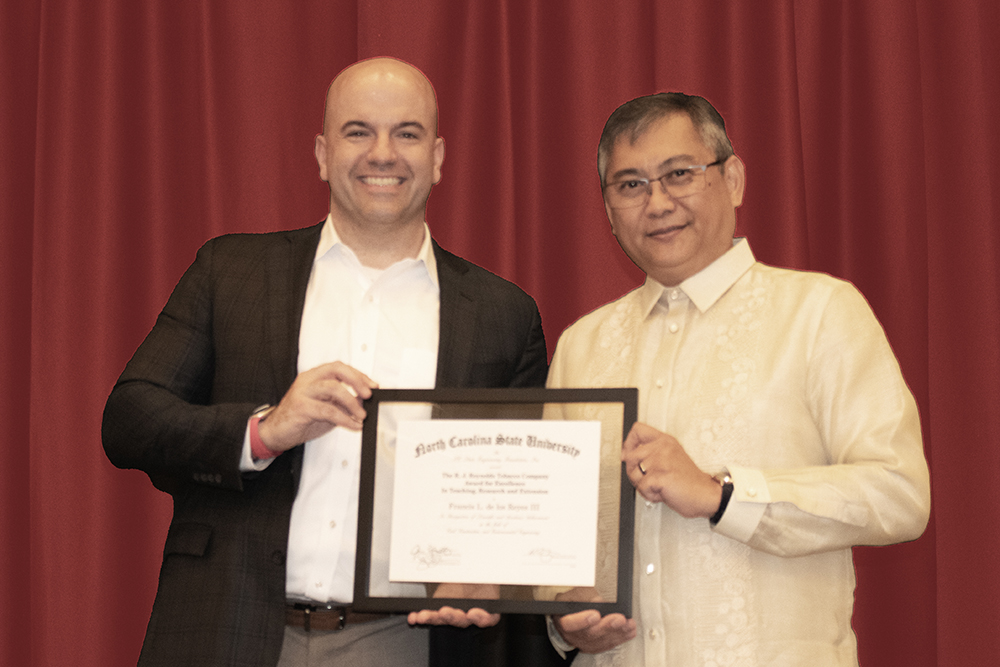In our labs

VIRTUAL AND AUGMENTED REALITY LAB
Edward P. Fitts Department of Industrial and Systems Engineering
Dr. Karen Boru Chen’s work in the field of human factors engineering explores how people interact with different types of systems — and how to make those systems safer and more efficient.
“I really have a passion for studying and helping humans from a healthcare and safety perspective,” Chen said.
Her Ph.D. work in biomedical engineering at the University of Wisconsin-Madison aligned with an emergence of interest in virtual reality (VR) systems, based in part on advances in processing speed and screen resolution in commercially available systems.
Today Chen, an assistant professor in the Fitts Department of Industrial and Systems Engineering, is studying how VR can provide expanded access to healthcare services and workplace training.
Chen’s CAVE (that’s Cave Automatic Virtual Environment) is a four-sided (that’s three walls and a floor) screened enclosure with a digital projection system that creates an immersive virtual environment with the capability for a researcher to track a participant’s movements.
Markers on 3-D glasses worn by a research participant allow cameras lining the structure to track the participant. The CAVE uses a rear-projection system with mirrors so that the research participant does not see shadows cast over the visuals in the virtual environment.
Chen sees the field in two categories — VR systems that are entirely contained in a device that goes over a patient’s head or larger systems like a CAVE. While a CAVE might help a researcher draw more data on face-to-face interactions and collaborations, using an over-the-head device like the commercially available Oculus Rift headset is more cost-effective and accessible.
Chen has used a headset to conduct research in a large-scale research clinic with patients undergoing physical therapy for neck pain.
“It made more sense to bring the equipment to a clinic,” she said. “It doesn’t make sense to bring a CAVE to an office or to ask these patients who are already in pain to come to my lab.”
In the future, VR could allow patients to perform therapeutic exercises at home rather than in a medical facility. The hope is that this will provide a more cost-effective treatment and expand access to patients who have trouble traveling to an office because of mobility issues or inconvenient office locations. The same technology can be used to provide job-related training or serve as a fill-in virtual personal trainer for patients who need to exercise.
The technologies aren’t intended to replace one-on-one interactions with a human professional, Chen said, but rather to supplement it. Patients who need physical rehabilitation are often sent home with a sheet of paper listing exercises. The hope is that a virtual program could motivate them to push further by making the movements more engaging, similar to a kind of game. The 3-D environment also can give a patient a better sense of whether the movements are being done correctly. And because a patient at home using a headset system relies on a virtual avatar to see what she is doing, the feedback may be altered slightly to make that patient think she is doing less movement than she really is in order to push her a little further or help overcome fear of more injury.
But first, baseline research that compares how research participants perform in a virtual world compared to the physical world must be conducted to evaluate VR-based therapy’s feasibility.
One of Chen’s graduate students is using the CAVE to conduct research that compares how first responders perform a lifting task using virtual weights with how they make the same lift using an object in the real world.
Return to contents or download the Fall/Winter 2019 NC State Engineering magazine (PDF, 2.3MB).
- Categories:


